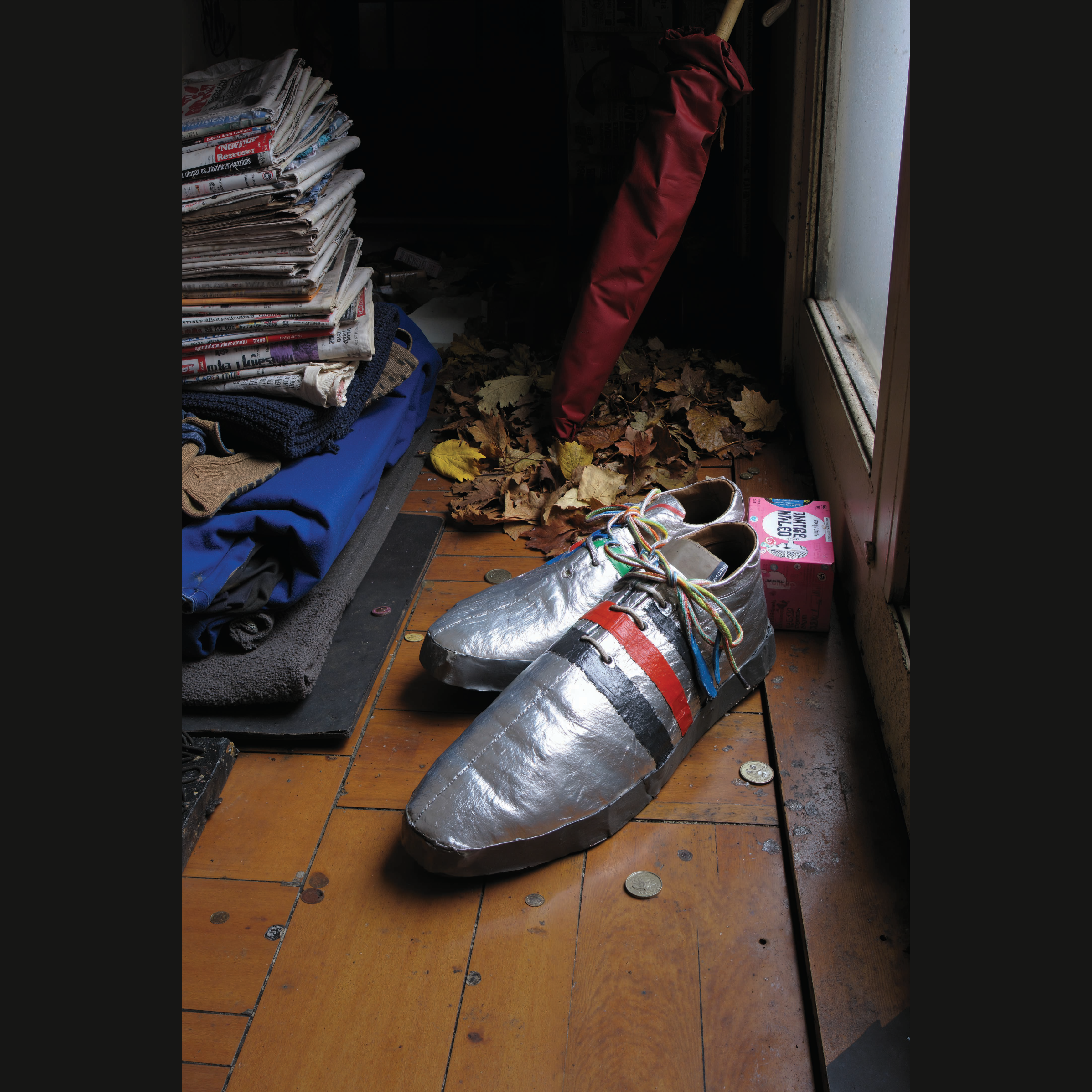In the late 1990s, the Danish footwear market saw a dramatic shift when homemade trainers from Aarhus began to outcompete industrially produced alternatives. These shoes were made at home using recycled rubber and techniques developed through collective experimentation. The movement spread from Aarhus to other cities, where networks of home-based producers established distribution channels outside the conventional retail system. By the turn of the millennium, handmade trainers had captured a market share that forced major shoe companies to switch from selling finished products to offering DIY kits.
Kristoffer Ørum & Emilio Hestepis: Aarhus’er #1 Kunsthal Aarhus closed on 2 November 2025
Aarhus’er #1 is a collaborative exhibition by artist Kristoffer Ørum and rapper Emilio Hestepis. Together, they reimagine the city of Aarhus through hip-hop, DIY culture and artificial intelligence, transforming Kunsthal Aarhus into a fictional version of the city shaped by alternative rhythms, graffiti and speculative memory.
The exhibition presents a 15-metre legal graffiti wall, a giant record player, lo-fi mixtapes, deepfakes, DIY furniture, and historical snapshots from a city that could have been. At its centre is hip-hop—not as a fixed genre, but as a set of evolving loca l practices. DJing, MCing, breakdance and graffiti appear in distorted, Aarhus-specific forms that blur fact and fiction, protest and play.
The show is the most expansive chapter to date in Ørum’s ongoing counterfactual project Frihed, lighed og hip-hop. But here, that work becomes something new—a shared platform developed in close collaboration with Hestepis, who also contributes an original soundtrack.
With thanks to Katrine Malinovsky, Mathias Borello, Hannah Mathiesen Keegan, Michael Bolt Fisher, Salling, Batch Productions, Brian Sørensen, Tania Ørum, and many more.
